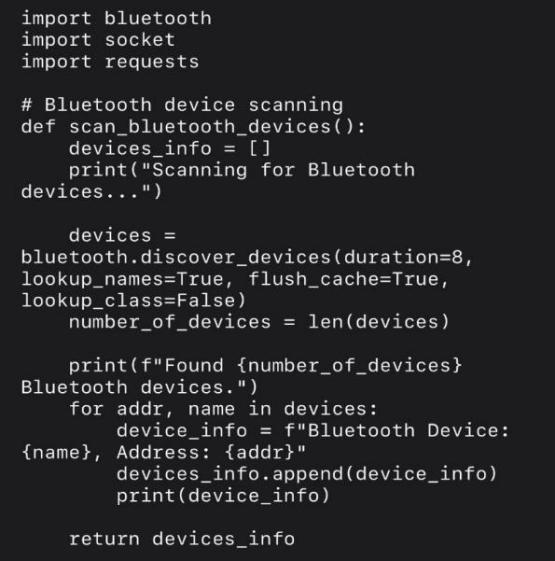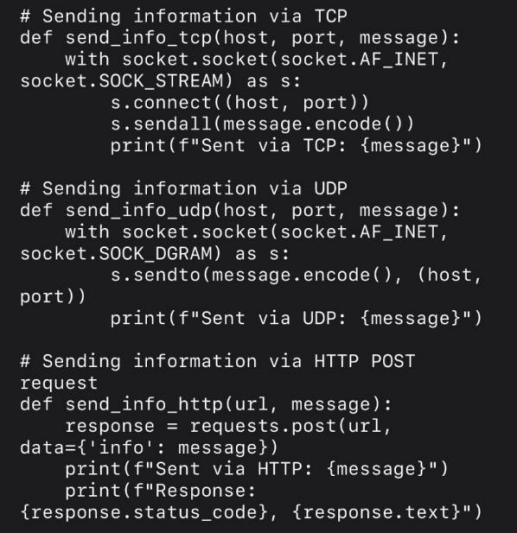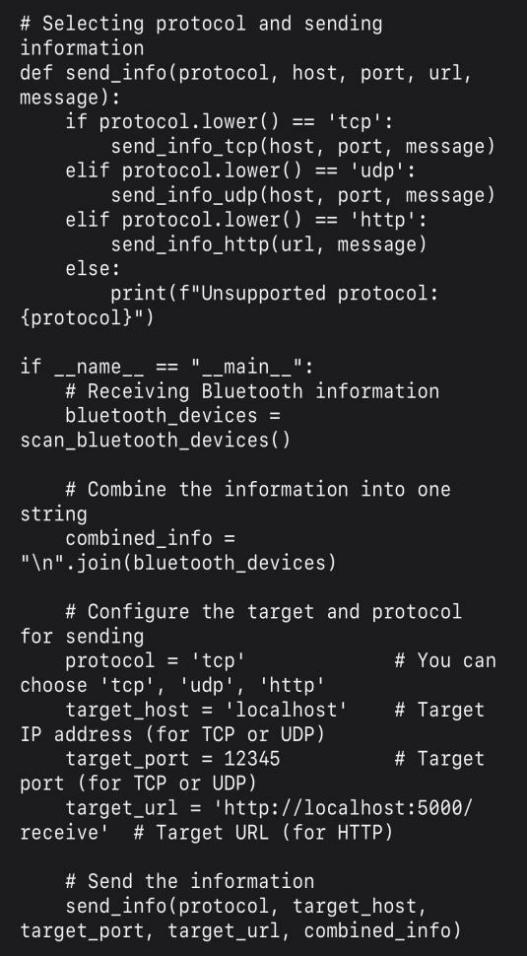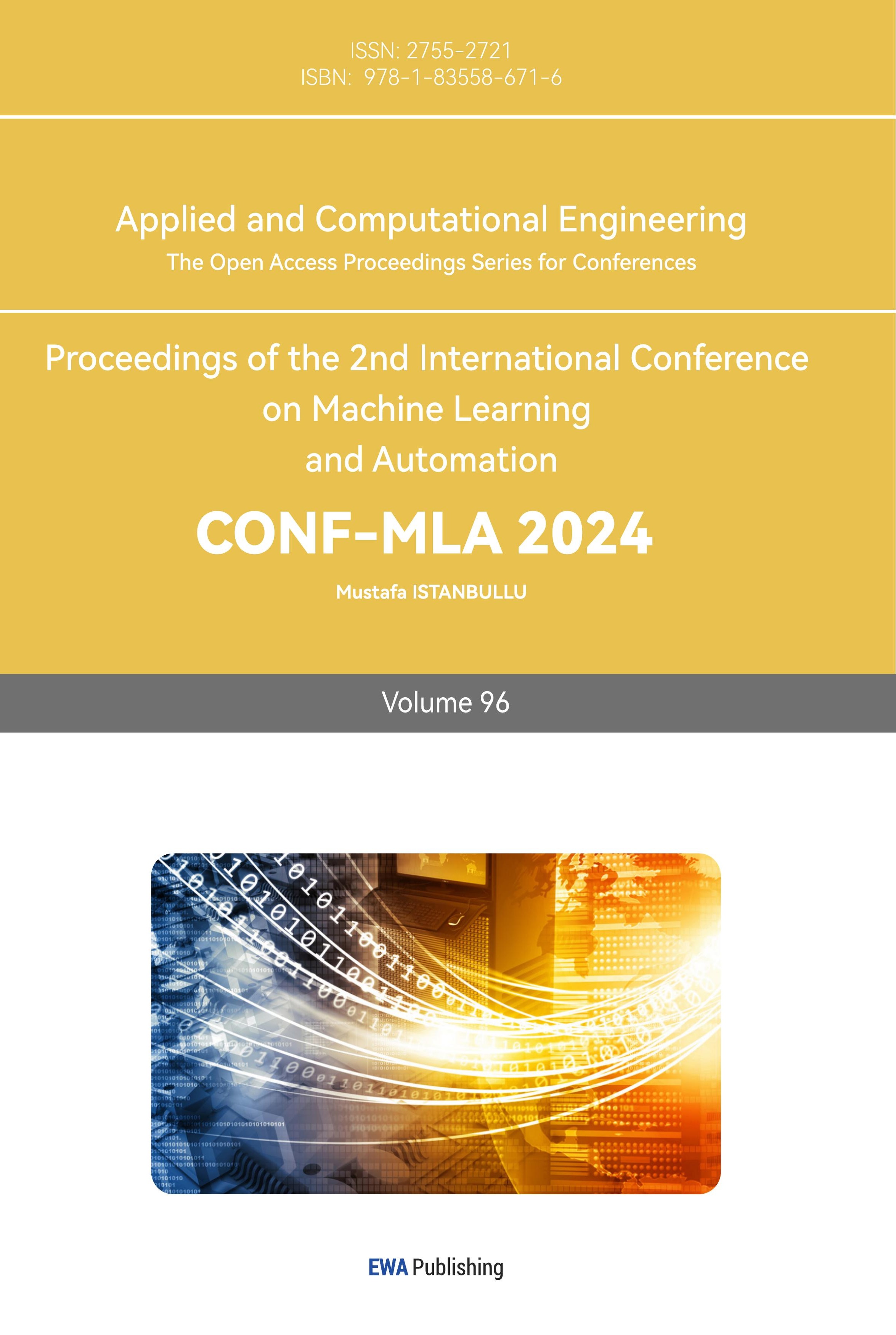1. Introduction
With the progress of IoT technology, smart home have gradually become a dispensable part of people’s lives. The concept of a smart home revolves around the intergration and utilization of various cutting-edge technologies such as The Internet of Things (IoT), Artificial Intelligence (AI), and sensor technology. These technologies work together to connect different smart devices within a household to achieve intelligent management and control. This allows users to control these devices remotely through mobile phones or other mobile devices. Moreover, users can also customize the device running status based on their preferences. The wide application of smart home has brought a lot of convenience to people's lives. Unfortunately, with the widespread use of smart homes, compatibility issues between devices are becoming more and more prominent. The inability to effectively control smart home products within one’s own residence can complicate what was intended to simplified people’s lives. Consequently, it is crucial to address the problem of compatibility in order for smart homes to fulfill their purpose seamlessly. Overall, resolving compatibility issues is essential for ensuring the effectiveness and efficiency of smart homes. By doing so, individuals can truly harness the benefits that this technology offers in enhancing the daily lives without unnecessary complications [1].
2. The current status of smart home compatibility issues
2.1. Compatibility issues
Currently, with the advent of the smart home industry, a large amount of scientific manufacturers and some established home appliance manufacturing industries such as Siemens, Gree, Apple, and Amazon have embarked on developing their own brand of smart home products. However, because there are different transmission protocols and standards across different brands, interoperability issues persist among smart home devices, which means they are always hard or even cannot connected with each other [2]. Achieving comprehensive control over all household devices solely through a single phone or application proves challenging for users. Consequently, if the users want to control all the devices, they may need to do some complex configuration and integration work, by setting rules, creating scenes, or some other necessary operation, to ensure that all the devices in their house can communicate and collaborate correctly. As a result, the control environment in smart homes has become extremely cumbersome and unstable [3-4].
2.2. Existing solutions for smart home compatibility
Compatibility issues are increasingly becoming a huge obstacle to the development of the smart home industry, and most of the smart home manufacturers are also looking for ways to solve the problem about device compatibility. At present, the main solution on the market is to allow users to download the corresponding application on their mobile devices and then use the applications you downloaded to get control of the smart home devices. But there are some problems coming, too. Actually, most consumers will choose various styles and brands of smart home products according to their own needs, which will lead to a lot of application downloads to realize devices controlling and that bring lots of trouble to users. Apart from that, there is another way, by promoting cooperation between different manufacturers and launching interconnection protocols to achieve the connection among all the devices. In this way, users can control the devices just by using one smart phone or one application. Although this method seems to be very good, in fact, such a wonderful collaboration like this maybe just between one or two manufacturers. Because most of the companies are in a competitive relationship, this kind of ideal cooperation is often very difficult to achieve [5].
3. Seeking solutions on the communication protocols of smart homes
3.1. Principles of smart home communication
The smart home works on the principle of wireless network technology, such as Bluetooth, Wi-Fi, and Zigbee [6]. They can connect the smart home devices to the terminals, and intelligent operation can then be achieved using such terminals. Users send instructions from their mobile phone, using a fixed transport protocol to send information to other devices, and the device will execute the commands. On the other hand, if the smart home device has the same transmission protocol and communication standard as the user's mobile device, then the mobile device can control the smart home device normally. On the contrary, if the two devices have different transmission standards, the device and the terminal may not be able to communicate or connect.
3.2. Resolving compatibility issues by establishing a switcher
The information transmission in the IoT field actually could be compared to the delivery system in our daily lives. If people want to deliver the package to the addressee correctly, they need a detailed address. The same is true for transmission patterns in the Internet of Things, different devices all have a one-of-a-kind address, just like our ID in the country or our home address. Only we know the address for one device, we then could send a message to it so that it can execute operations. However, different transmission protocols and standards make two different devices hard to get the information of the address of the other party's device, which means that these two devices cannot communicate with each other successfully, and this phenomenon is where the smart home compatibility issue manifests.
So if we want to change that situation, in my own view, we can set a relay module, like a switcher, that can read all the device addresses of different transport protocols and standards. At the same time, when it receives the command from users, it could quickly finish the job of information translation to be more specific, the relay module could transfer the original signals to the signals that have the same transmission protocols as the device to be controlled and then send it out. In this way, the devices with different transmission protocols could know their job by receiving the signals sent by the relay module and completing the job that users want them to do.
This kind of relay module can realize the interconnection of smart homes in a real sense, users may just need one specific application to control all the smart home devices that have different transmission protocols and bands. Without downloading cumbersome applications or waiting for the so-called strategic cooperation between some manufacturers.
4. Ways to realize it
4.1. Interpretation of principles and methods
In order to realize the relay module, one way is using code to achieve. Use Python or other computer languages to design a program, and then allows it to accept signals sent by different transmission protocols. Besides, it can also transfer the accepted signals to specific transfer protocol methods before it sends them to devices, which means that the relay module is required to support most of the major transport protocols. In that case, programmer need to add the most popular transport protocols into the codes.
4.2. Security issues
Security is indispensable for everything, and the same is true for relay modules. If this all-rounder control module could be cracked easily, it would bring a large amount of trouble to smart home clients. In addition to that, some criminals may get knowledge of the users’ living habits by cracking the module and monitoring it, and in the end finishing some criminal activities like burglary and homicide [7-8].
4.3. Code samples
This paper selects to use Python code to try to finish the function of relay modules, as shown in the following figures. It can receive and read information from different communication protocols, such as Bluetooth, and can send the received information in different transmission protocol formats.

Figure 1. Python Code 1-1.

Figure 2. Python Code 1-2.

Figure 3. Python Code 1-3.
5. Results
From the simulation in Python software, it shows that this code could successfully collect all the commands the author desired. The program received different kinds of protocol signals and translated the signal before sending it to other smart home devices. It is much more convenient than existing treatment methods and otherwise could largely improve the efficiency and effectiveness when users command the devices. With the solution in terms of software, people could use this code and put it into the relay module or the switcher. When this hardware device recive the signal, it could transform the sending protocals inside before sending the signal out to smart home devices, and solve the compatibility problem in this way.
6. Limitations and future trends
For the limitations, there would be two factors. The first one, which is the most important one, is a security problem. Electronic devices are very easily attacked by hackers, and the same is true for this relay module. Besides, there are very few security solutions to protect smart home devices, and most people do not have the conscious in this field. However, I would like to say that climates may observe your living habits by attacking devices before doing some unlawful activities. The second factor is that this program needs to import different kinds of communication protocols at first, and actually it’s very hard to change or add when a new protocol comes, so this solution is not smart enough.
However, there might be several ways to improve the limitations, like we can write some security program to protect the module and design a part to read protocols and add it automatically.
With the development of science and technology and the continuous innovation of smart home technology, the smart home of the future will definitely become more convenient and practical. In addition, artificial intelligence has been born in recent years, which will surely bring more possibilities to the control mode of smart homes. When facing the problem of compatibility, people can build a relay module to achieve the transformation for different signals sent by devices or users themselves, and then realize the interconnection of various smart home devices. In the future, with the continuous improvement of the scientific and technological level of society, the smart home market will definitely be hotter and hotter. The solution to the compatibility problem will also provide a brighter future for the smart home industry and make smart homes truly smart and convenient for people's lives. For the existing relay module, if the experts want to put their minds to this relay module, the compatibility problems in smart homes must be solved quickly. In this way, clients can get a good experience when using smart home devices [9].
7. Conclusion
This paper addresses the compatibility issue prevalent in contemporary smart home devices, delving into its underlying causes and proposing a specific solution for the compatibility issue. The increasing popularity of smart home devices has led to a wide range of products available on the market, each with their own unique features and functionalities. However, this diversity often result in compatibility issues between different devices from various manufacturers. At last, limitations and future development trends are also concluded in the paper. The proposed solution focuses on ease of comprehension and cost-effectiveness; however, it is not without limitations. For example, some security issues have not been taken seriously or the code functionality has limitations. These potential problems may greatly destroy user’s sense of experience. To solve this issue, the paper proposes a solution that focuses on ease of comprehension and cots-effectiveness. By designing a security program using code or innovating the original code, it aims to enhance the reliability and interoperability of smart home devices. Additionally, efforts should be made to ensure that security issues are taken seriously during development processes to protect users’ privacy and prevent unauthorized access.
In terms of future developments of this relay module or all the smart home devices, this paper suggest that researchers should try to create as much convenience as possible on the premise of safety. Moreover, experts could find out new ways to solve the compatibility problem in smart home. And our end goal is making the smart home industry better serve the society, bring a more intelligence and convenience smart home experiences to clients.
References
[1]. Lan, Xiaohai. Status quo of smart home applications. Television technology. 2023, 47(08): 222-224+228. DOI:10.16280/j.videoe.2023.08.057.
[2]. Zhang Shengying, Wang Yanjun. The current situation and future of smart home in China. Modern business. 2012 (16): 60-61. DOI:10.14097/j.cnki.5392/2012.16.007.
[3]. Liu Qingxia. How far is the smart home interconnection? Urumqi Evening News. 43.
[4]. Liu Xiaoyan. Fight for yourself! Smart home interconnection is a bit "blocked". Workers' Daily. 2024.6.18. retrieved from https://new.qq.com/rain/a/20240618A00FWP00
[5]. Bai, Xue. Research on the Design Status and Improvement Strategy of Smart Home Products in the New Era. Art appreciation. 2024(20): 83-86.
[6]. Liu, Jinwen. Research on the application of wireless communication technology in smart home. The world of digital communication. 2022(07): 103-105.
[7]. Stewart, Wolpin. How To Overcome Consumer Smart Home Compatibility/Security Concerns, Journal | [J] TWICE. 2019, 34 (19).
[8]. D.M Sheeba; S. Jayalakshmi. Lightweight Blockchain to Improve Security and Privacy in Smart home. Journal | [J] International Journal of Recent Technology and Engineering (IJRTE). 2020, 8(6): 5021-5027.
[9]. Xia Jinyu. Analysis of privacy leakage problem of smart home based on Internet of Things. Secrecy science and technology. 2023(06): 64-68.
Cite this article
Zhang,B. (2024). Deep Learning Research on Smart Home Compatibility. Applied and Computational Engineering,96,1-6.
Data availability
The datasets used and/or analyzed during the current study will be available from the authors upon reasonable request.
Disclaimer/Publisher's Note
The statements, opinions and data contained in all publications are solely those of the individual author(s) and contributor(s) and not of EWA Publishing and/or the editor(s). EWA Publishing and/or the editor(s) disclaim responsibility for any injury to people or property resulting from any ideas, methods, instructions or products referred to in the content.
About volume
Volume title: Proceedings of the 2nd International Conference on Machine Learning and Automation
© 2024 by the author(s). Licensee EWA Publishing, Oxford, UK. This article is an open access article distributed under the terms and
conditions of the Creative Commons Attribution (CC BY) license. Authors who
publish this series agree to the following terms:
1. Authors retain copyright and grant the series right of first publication with the work simultaneously licensed under a Creative Commons
Attribution License that allows others to share the work with an acknowledgment of the work's authorship and initial publication in this
series.
2. Authors are able to enter into separate, additional contractual arrangements for the non-exclusive distribution of the series's published
version of the work (e.g., post it to an institutional repository or publish it in a book), with an acknowledgment of its initial
publication in this series.
3. Authors are permitted and encouraged to post their work online (e.g., in institutional repositories or on their website) prior to and
during the submission process, as it can lead to productive exchanges, as well as earlier and greater citation of published work (See
Open access policy for details).
References
[1]. Lan, Xiaohai. Status quo of smart home applications. Television technology. 2023, 47(08): 222-224+228. DOI:10.16280/j.videoe.2023.08.057.
[2]. Zhang Shengying, Wang Yanjun. The current situation and future of smart home in China. Modern business. 2012 (16): 60-61. DOI:10.14097/j.cnki.5392/2012.16.007.
[3]. Liu Qingxia. How far is the smart home interconnection? Urumqi Evening News. 43.
[4]. Liu Xiaoyan. Fight for yourself! Smart home interconnection is a bit "blocked". Workers' Daily. 2024.6.18. retrieved from https://new.qq.com/rain/a/20240618A00FWP00
[5]. Bai, Xue. Research on the Design Status and Improvement Strategy of Smart Home Products in the New Era. Art appreciation. 2024(20): 83-86.
[6]. Liu, Jinwen. Research on the application of wireless communication technology in smart home. The world of digital communication. 2022(07): 103-105.
[7]. Stewart, Wolpin. How To Overcome Consumer Smart Home Compatibility/Security Concerns, Journal | [J] TWICE. 2019, 34 (19).
[8]. D.M Sheeba; S. Jayalakshmi. Lightweight Blockchain to Improve Security and Privacy in Smart home. Journal | [J] International Journal of Recent Technology and Engineering (IJRTE). 2020, 8(6): 5021-5027.
[9]. Xia Jinyu. Analysis of privacy leakage problem of smart home based on Internet of Things. Secrecy science and technology. 2023(06): 64-68.









